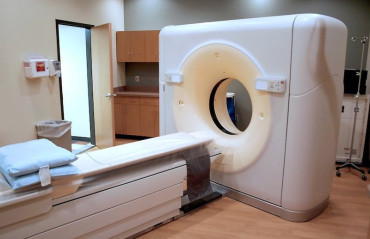Can A Radiologist Be Liable For Medical Malpractice?

Radiologists are medical doctors who are trained to interpret the results of imaging devices like X-rays and CT scans. They cooperate with other doctors to diagnose patients. When physicians are treating patients, and they believe that medical imaging will help determine a condition or with the treatment of a patient, they order tests, and a radiologist gets the results. The radiologist will then read and interpret those results and send them to the treating doctor to discuss with the patient.
Suppose a mistake is made in how the radiologist reads or interprets medical imaging tests. In that case, it may result in a missed or misdiagnosed condition that can be detrimental to the patient. When that happens, and the patient suffers harm due to the error, the radiologist may be liable and financially accountable through a medical malpractice lawsuit.
Radiologists are responsible for two primary functions: diagnostic radiology and interventional radiology. Mistakes can happen with both types that place patients at risk of serious, even fatal, consequences.
What Is Diagnostic Radiology?
Diagnostic radiology encompasses any medical imaging that assists doctors in diagnosing illnesses, injuries, or diseases in patients. It may include:
- X-rays
- CT scans
- Ultrasound imaging
- Fluoroscopy
- PET imaging
- MRA
- PET-CT
- Mammography
- Nuclear medicine
Misreading or misinterpreting these tests puts patients at risk of having serious medical complications. When the correct condition isn’t identified quickly and treated properly, the condition may spread or worsen.
What Is Interventional Radiology?
Interventional radiology is an advancing medical practice in which radiologists perform targeted, minimally invasive treatments that use imaging guidance. It frequently replaces traditional open surgical procedures. Interventional radiologists read ultrasounds, X-rays, and other types of imaging to guide small instruments such as catheters through blood vessels or other body structures to treat patients percutaneously (through the skin). Interventional radiology is often preferred because it isn’t as invasive as surgery, costs less, offers less pain, shorter recovery times, and less risk to patients.
Interventional radiology may be used for:
- Arterial or venous blockages
- Various cancer treatments
- Liver and kidney conditions
- Uterine fibroids
While this type of radiology offers less invasive treatment than surgical procedures, there is still room for error. When a patient suffers harm due to such an error, the radiologist may be found liable.
What Are The Most Common Types Of Radiology Malpractice?
When radiology results or reports are misread or misinterpreted, there may be serious medical consequences for the patient. The most common types of errors in radiology include:
- Misinterpretations of a study as normal, when it is actually abnormal
- Failure to diagnose an aneurysm
- Failure to diagnose a broken bone
- Failure to diagnose cancer
Mistakes like the above often lead to delayed treatment, incorrect treatment, or no treatment. If a patient’s medical condition isn’t identified promptly and properly treated, it can get worse, spread, or even result in death.
Some of the other types of radiology mistakes include:
- Failure to use available contrast
- Failure to order appropriate follow-up tests
- Communication problems between the lab and a physician
- Failing to recognize other medical conditions, such as bowel obstruction or brain bleed
How To Hold A Radiologist Accountable For Malpractice
When a radiologist commits an error that causes injury to a patient, the patient may be able to file a claim against the radiologist seeking compensation for the sustained damages.
A successful lawsuit must prove that the patient was injured due to the radiologist’s failure to meet the accepted standard of care that another radiologist would have used in the same situation. In other words, if a negligent radiologist misses a diagnosis that a competent radiologist would have identified while examining the same report, and a patient suffers injuries, then it may be a valid case of medical malpractice.
At Ross Feller Casey, we have the expertise to represent patients who have fallen victim to radiology medical malpractice. We have a team of Ivy League-trained medical doctors right on staff who review medical records and identify negligence in these cases.
If you have suffered harm due to radiology negligence or malpractice, the attorneys at Ross Feller Casey can help. We have an unmatched record of multimillion-dollar recoveries in medical malpractice cases for patients just like you. Call our office today for a free review of your case. Radiology malpractice cases are handled on a contingency basis, which means you will not pay anything until a financial recovery is made in your case.
Disclaimer: Ross Feller Casey, LLP provides legal advice only after an attorney-client relationship is formed. Our website is an introduction to the firm and does not create a relationship between our attorneys and clients. An attorney-client relationship is formed only after a written agreement is signed by the client and the firm. Because every case is unique, the description of awards and summary of cases successfully handled are not intended to imply or guarantee that same success in other cases. Ross Feller Casey, LLP represents catastrophically injured persons and their families in injury and wrongful death cases, providing legal representation in Pennsylvania and New Jersey.





